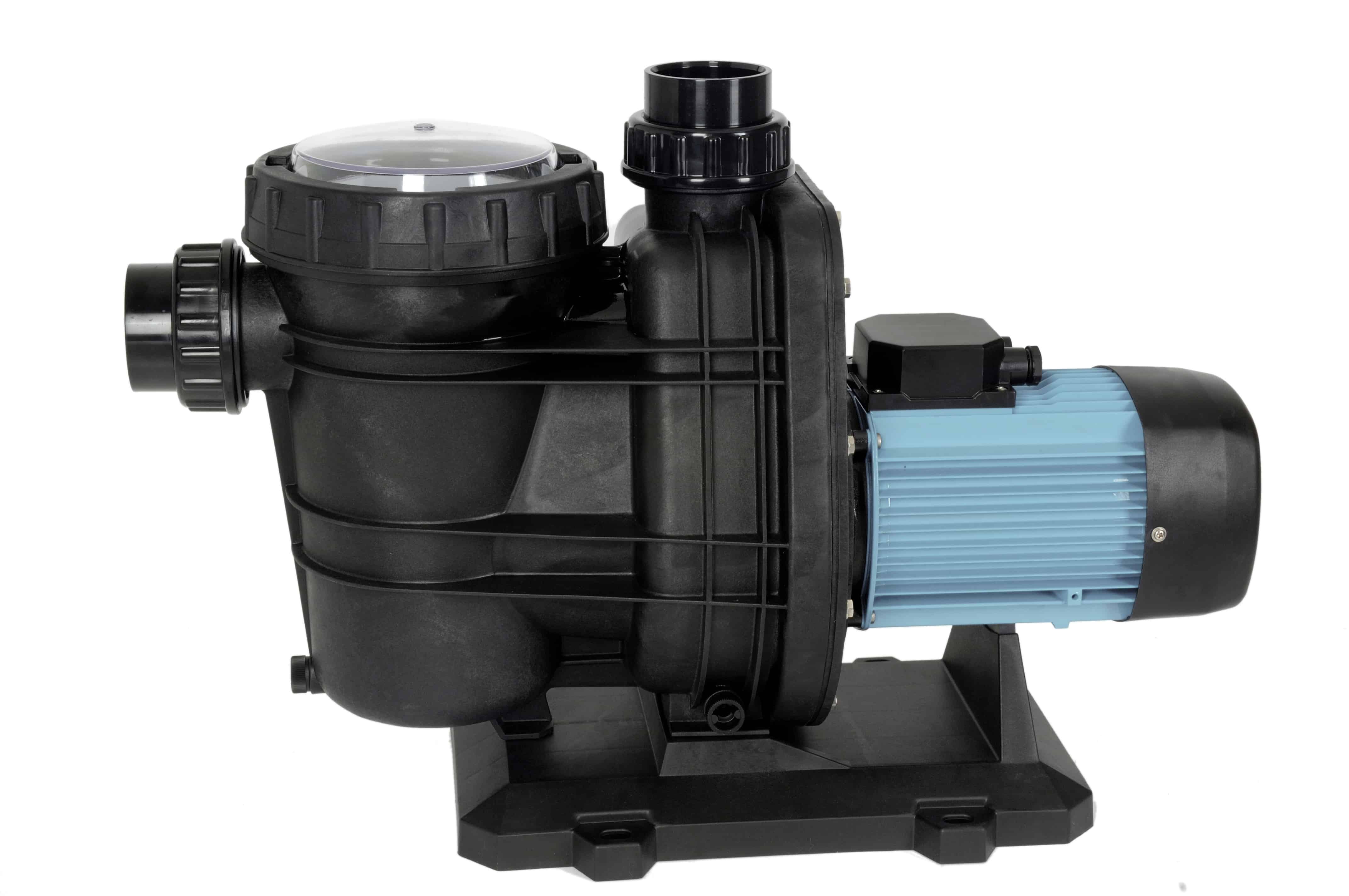When selecting a pump for your specific filter and pool size, the most important factor is to select a pump that is powerful enough to circulate the entire volume of water in the pool in the desired time period. This can be calculated by dividing the volume of the pool (measured in gallons) by the desired turnover rate (measured in gallons per hour).
The resulting number is the minimum pump flow rate (measured in gallons per hour) that should be selected. Other factors to consider when selecting a pump include:
- Type (single-speed, two-speed, or variable-speed)
- Energy efficiency
- Features
- Cost
Single-speed, two-speed and variable-speed pool pumps explained
While in the past, pool owners could simply purchase a one-speed pump, you now have choices with varying benefits and considerations along with different price points.
Single-speed pool pumps
Single-speed pool pumps are the most basic type of pump and are designed to run at one consistent speed only. This type of pump is typically the most affordable option, but can be less energy efficient than variable-speed or two-speed models.
Up until the introduction of the next two options, the single-speed pool pump was simply known as a pool pump since it was the only choice available.
Two-speed pool pumps
Two-speed pool pumps have the ability to run at two different speeds, typically a lower speed for normal operation and a higher speed for when the filter needs to be cleaned.
This type of pump is more energy efficient than a single-speed model, but still not as efficient as a variable-speed model.
Having said that, if you live in an area with time of use electricity pricing where it costs more during peak periods and less during off peak times, you could set your pump to run slower during peak times to save money.
Variable-speed pool pumps
Variable-speed pool pumps are the most energy efficient type of pump and can be adjusted to run at different speeds depending on the job at hand. This type of pump is best for pools that are used more often, as they are able to save energy when running at lower speeds while still providing the necessary power when needed.
Variable speed pumps can also operate quieter than single-speed models and may also last longer given that they operate at lower (variable) speeds. They also often come with advanced features such as self-diagnostics, which can help identify and correct issues.
Additionally, variable-speed pumps can be programmed to run at different speeds at different times of the day, allowing for further energy savings if you have time of use electricity pricing.
Cost savings of two-speed and variable-speed pool pumps
Compared to a single-speed pool pump, a variable-speed pool pump can save around 30% – 90% in electricity costs and a two-speed pool pump, around 20% – 50%. However, the savings will depend on the specific usage and configuration of the pool, the size of the pump and other factors.
It is also worth mentioning that in some areas there are rebates and incentives available to pool owners that install variable-speed pool pumps.
It is further suggested that in the case of a variable-speed pump, owners can recoup the cost of the pump within about two years in terms of the energy savings they accrue over a single-speed model.
Pool pump energy usage isn’t insignificant
The energy usage of a pool pump will depend on its size and flow rate, as well as the length of time it is operated. On average, a typical pool pump will use be rated at 1.5 – 3.0 horsepower (hp).
A pool pump with no friction uses 746 watts per horsepower. So a 1 hp pump uses 746 watts, a 1.5 hp pump uses 1119 watts and a 2 hp pump uses 1492 watts.
Let’s take a look below at what this wattage translates to in terms of cost.
The cost to run your pool pump per month
An average cost for electricity is around 16.6 cents per kilowatt-hour (kWh) but as this is an average, your local area could be priced higher or lower.
If you run a 1.5 hp pool pump 8 hours per day, this would consume 1119 watts X 8 hours = 8952 watts or 8.952 kWh per day.
At an average cost of 16.6 cents per kWh, your pool pump would cost you 8.952 kWh X 16.6 cents = $1.48 per day or about $45 per month.
Wattage can vary greatly depending on the specific model. You can check the label on the equipment or contact the manufacturer for more precise data on the energy consumption of your pool pump.
The good news?
You don’t have to run your pool pump 24/7 in all likelihood. While local weather conditions (how hot it gets, how much rain you get) along with your pool usage (how often, how many people, etc) matters, you can most likely get away with running your pool pump around 8 hours per day give or take.
Not only will this save you electricity costs, it’ll reduce the wear on your pump and other pool equipment and should help to extend their lifespan.

